A samba queen's guide to Rio de Janeiro
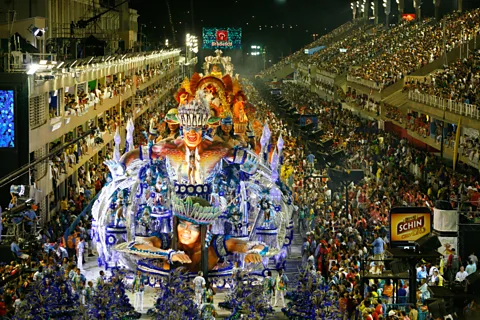 Alamy
AlamyMayara Lima is famous for her hypnotising samba style. Here, she shares the best samba experiences in Rio, from traditional school events to samba circles.
Brazilians often say that "everything ends in samba", but perhaps it would be more accurate to say that samba never ends – at least not in Rio de Janeiro, one of the places where the musical and dance genre is said to have originated. Aside from providing entertainment, samba has played a crucial role in shaping Rio's lifestyle, including taking a central role in its Carnival celebration – the most renowned in the world.
More than just a genre, samba is a cultural phenomenon that helps drive the economy, with more than 150 official rodas de samba (samba circles) across the city. At these lively gatherings, musicians sit in a circle while crowds of hundreds – or even thousands – of spectators sing along, creating an electrifying atmosphere. Meanwhile, escolas de samba (community-based "samba schools" that organise the world-famous Carnival parade with its giant floats and thrilling costumes) elect a rainha da bateria (queen of the drums) who leads the school's bateria (drum section), captivating the crowd and forging a powerful connection between the musicians and the audience.
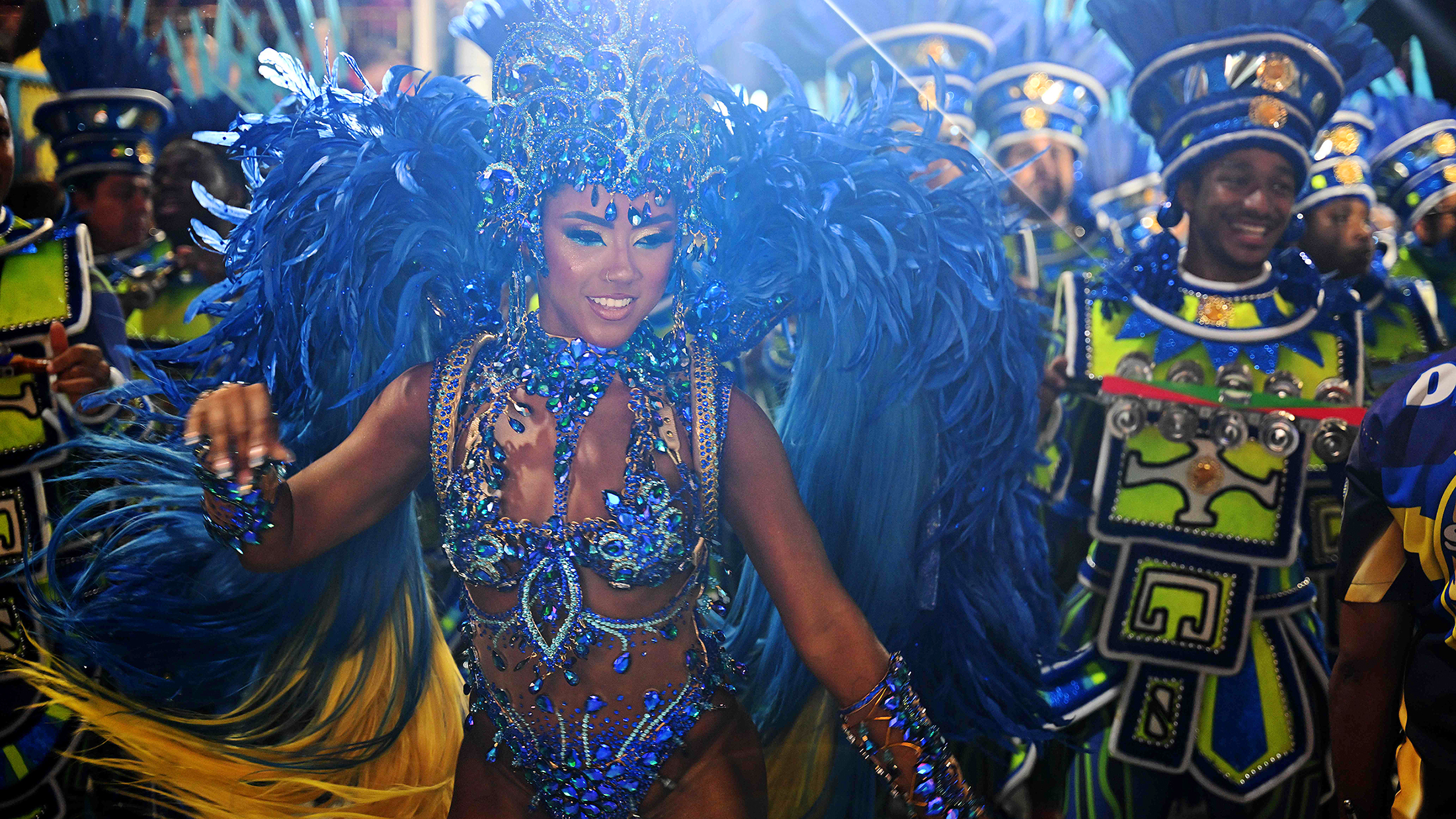
The SpeciaList
Mayara Lima is one of Rio's most popular samba queens, having claimed the title of drum queen in 2023. She currently represents the Paraíso do Tuiuti samba school, where she gained national recognition for her mesmerising samba style.
But the energy of samba can be felt in Rio all year round. Even outside Carnival season, events like samba school street rehearsals offer a vibrant and immersive experience. We asked Mayara Lima, a rainha de bateria (drum queen) at Pararaíso do Tuiti, one of Rio's most renowned samba schools, how to experience the city's rich samba culture during Carnival and beyond.
Lima knew from an early age that dance was her calling, and she joined a samba school at age 10. "I had studied other rhythms, such as ballet and jazz, but I decided to be fully dedicated to samba," she says.
Lima is a proud carioca – a Rio native. "To me, Rio is far more than just a city," she says. "What makes Rio so unique is the way it combines breathtaking natural beauty – its beaches and trails – with the energy of a vibrant, urban metropolis, where every neighbourhood has its own distinct charm and history." She adds: "[But] you can't talk about Rio without talking about samba, can you? Their histories are intertwined."
Ahead of the 2025 Carnival, which runs from 28 February to 8 March, here are five of Lima's favorite samba experiences in Rio.
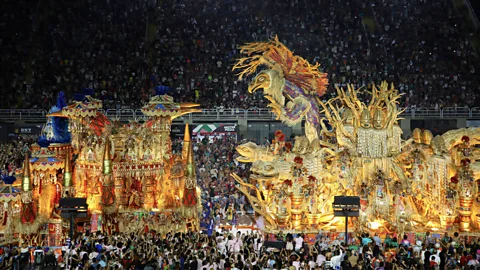 Getty Images
Getty Images1. Best for understanding the essence of samba: Escolas de samba events
Rio's samba school parade is a global spectacle every Carnival season. Of the more than 70 samba schools, only a select few belong to the elite group that takes centre stage, parading down the Sambódromo Marquês de Sapucaí during the festivities – but the schools promote several events during the year that take place in the quadras (samba school headquarters), which play a key role in strengthening ties between the schools and the local community.
Tip:
Rio's music scene is about more than just samba. "Baile Charme, an old-school R&B event, under the Madureira viaduct every Saturday [starts] at 20:00 and ends at the sunrise at 05:00," says Lima. This event has been going strong for over 20 years and remains a huge success, attracting thousands of people every week. "It's a great way to see another side of Rio's music scene."
Cariocas and visitors of all ages come to samba schools to watch rehearsals, participate in feijoadas (a traditional feast of black beans and pork) and enjoy live performances of the school's samba anthem; a new one is chosen each year to serve as the narrative musical thread for each performance.
"There are 12 main samba schools [in Rio], which means 12 opportunities to experience samba," says Lima. "While there's no fixed schedule for events, something is always happening. Each school hosts feijoadas several times a year. They feature guest performers playing not just samba, but also pagode [a type of samba/subgenre of samba] and carioca funk."
For Lima, the Grêmio Recreativo Escola de Samba Acadêmicos do Salgueiro samba school holds one of Rio's best feijoadas. "It's a thrilling event, it often happens in the first Monday of each month," she says. But her favourite type of samba school event is undoubtedly street rehearsals. "As Carnival approaches, we hold street rehearsals every Monday in front of the samba school before heading inside to continue practicing," she says. "It's amazing!"
Each school announces its events on social media. Street rehearsals are free, but other events, such as feijoada feast and samba circles, usually require a ticket.
Website: www.salgueiro.com.br
Address: R. Silva Teles, 104 - Andaraí
Phone: +552238-9226
Instagram: @salgueirooriginal
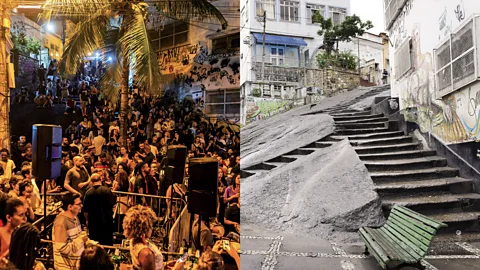 Alamy
Alamy2. Best roda de samba: Pedra do Sal
Pedra do Sal – a sloping set of stone steps found in Morro da Conceição, known as Rio's "Little Africa" – is believed to have been the birthplace of samba in the early 20th Century. When the area served as a market for enslaved people and the unloading point for salt (sal in Portuguese) shipments, it also became a gathering place for enslaved Africans, who came together to honour their deities and play the instruments that became part of samba's DNA, like the pandeiro (tambourine).
During the day, Pedra do Sal's rich history attracts small groups of tourists eager to understand Rio's past. But as the sun sets, the streets fill with vendors and hundreds of visitors drawn to the city's most famous roda de samba.
Once held only on Monday nights, the event grew so popular that organisers expanded it to four nights a week, from Friday to Monday – though Monday remains the busiest night. The music spills over Pedra do Sal's famous steps, creating an electrifying, open-air celebration.
"Pedra do Sal attracts such a diverse crowd – you'll find people from all over the city, from different backgrounds, and loads of tourists too," says Lima. "It's a great mix, and that reflects in the music. Samba is the essence, but you'll hear other rhythms too."
Address: Rua Argemiro Bulcão, s/n, Saúde,
Instagram: @pedradosaloficial
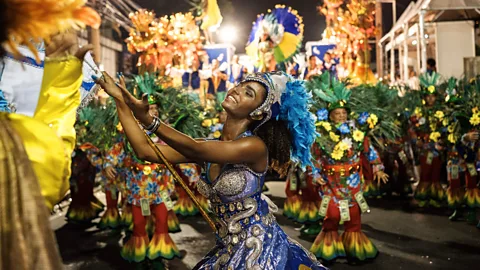 Getty Images
Getty Images3. Best for experiencing different styles of samba: Pagode do Chinelo
In the city's northern zone, 21km from the historic Copacabana beach, hundreds of samba enthusiasts gather at the Pagode do Chinelo roda in the Pilares borough, right next to the renowned samba school Caprichosos de Pilares.
Like most rodas de samba, the gathering started with modest expectations – just a group of friends meeting every Monday for a cold beer and some samba – but the samba do Chinelo quickly became a sensation and is now one of Rio’s official rodas de samba, attracting locals and celebrities alike, and has since evolved into a professionally structured event.
"This is one of those places everyone goes to. It's a given that it'll be packed every Monday, with plenty of famous faces in the crowd. Sometimes you even see singers like [Grammy winner] Ludmilla performing – it's really cool," says Lima.
The event kicks off at 18:00 and carries on into the late night. Pagode do Chinelo is also the perfect spot to experience different samba styles. "It's a great place to enjoy a more melodic samba, which is slower, or samba partido-alto, which is faster and more upbeat. It's brilliant fun," says Lima.
Address: Rua Faleiros, 1, Pilares
Instagram: @resenhapagodeechinelo
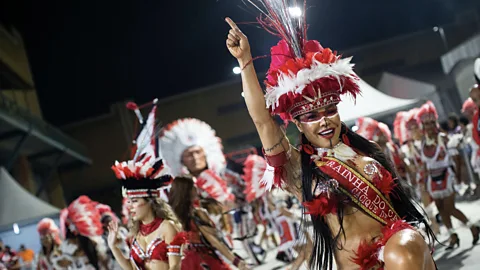 Alamy
Alamy4. Best for experiencing classic samba: Cacique de Ramos
The northern zone of the city is also home to one of Rio's most traditional rodas de samba.
Tip:
For those looking for a more laid-back way to explore Rio, Lima recommends having breakfast inside the Jardim Botânico. "Some of the cafes in the garden allow you to enjoy a morning meal surrounded by nature overlooking century-old trees," she says "It’s the perfect place to start your day in a relaxing atmosphere before exploring the city's other attractions."
Founded in the 1960s, Cacique de Ramos became famous for its legendary samba gatherings, where some of the genre's most celebrated artists first rose to prominence. Often described as the "headquarters of samba", it has played a pivotal role in shaping Rio's Carnival culture.
"This is where you'll find classic samba," says Lima. "Cacique de Ramos is the birthplace of many greats, including Arlindo Cruz, Zeca Pagodinho and Beth Carvalho. If you want to experience that unique energy, this is the place to go."
The samba takes place every Sunday in Cacique de Ramos samba hall, making it an ideal option for those looking to enjoy a lively evening without a late finish. "Since it's on a Sunday, Cacique de Ramos wraps up around midnight," says Lima. "So if you need to be up early the next day but still want to make the most of your weekend, it's perfect. It's definitely one of my favourites."
Website: www.caciquederamos.com.br
Address: Rua Uranos, 1326 - Olaria
Phone: +55213251-4374
Instagram: @cacique_de_ramos
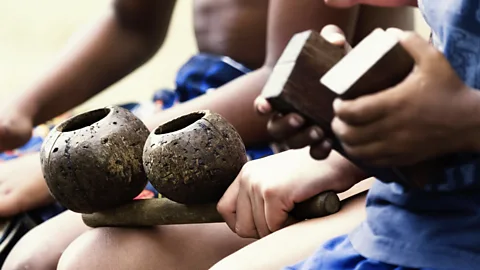 Alamy
Alamy5. Best for the whole family: Baródromo
Baródromo is a well-known samba venue among cariocas and a favourite gathering spot for samba enthusiasts. The walls are adorned with Carnival costumes and masks, immersing guests in the samba atmosphere the moment they step inside.
"It's always buzzing, absolutely packed," says Lima. "It's a bar with a proper traditional samba roda, where people clap along to the beat – it's such a great vibe. The whole place is dedicated to samba, and that's what makes it so special."
The venue is open from Tuesday to Sunday, with samba sessions every night, ranging from performances of traditional samba to live sets from samba school baterias.
Baródromo is a popular venue that frequently fills to capacity, occasionally leading to slower service. However, the lively atmosphere and infectious energy of the crowd create a fully immersive experience, with the music at its heart.
Address: Rua Dona Zulmira, 41 - Maracanã
Instagram: @barodromo
BBC Travel's The SpeciaList is a series of guides to popular and emerging destinations around the world, as seen through the eyes of local experts and tastemakers.
--
If you liked this story, sign up for The Essential List newsletter – a handpicked selection of features, videos and can't-miss news, delivered to your inbox twice a week.
